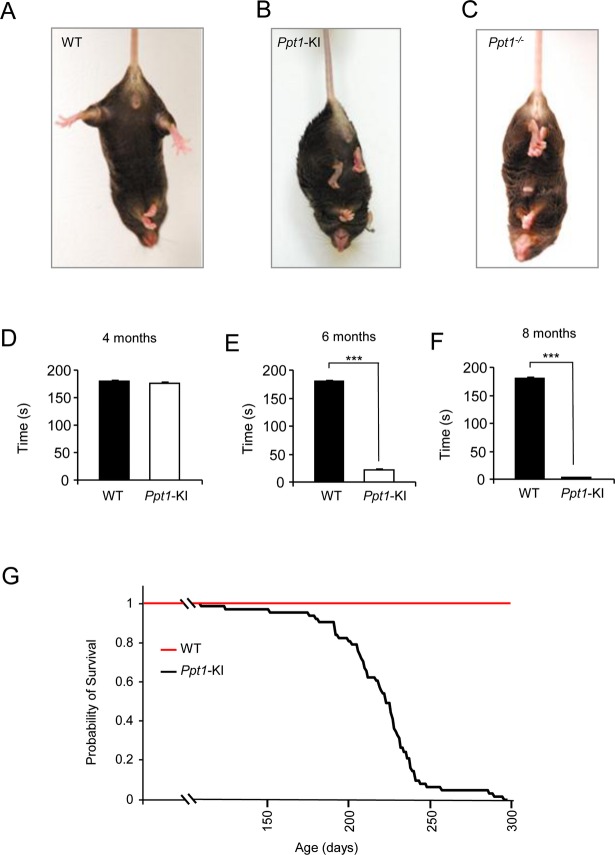Figure 6.
Clasping behavior, motor coordination by rotarod and lifespan assessment. The development of clasping behavior, which attests neurological deterioration, is not manifested in WT mice (A), but can be readily seen in their 6-month-old Ppt1-KI littermates (B). The Ppt1−/− mouse (C), which also manifest clasping behavior, was used for comparison. Graphic representation of the results of rotarod test for motor coordination of WT mice and their Ppt1-KI littermates at 4 months (D), 6 months (E), and 8 months (F) of age. The rotarod performance results are presented as the mean (n = 12) ±SD. Note that while the rotarod test results were not appreciably different between 4-month-old WT and Ppt1-KI littermates, these results were highly significant (***P < 0.001) when the rotarod performances of WT and Ppt1-KI mice at 6 and 8 months of age, respectively, were compared. Kaplan–Meier survival curve (G) of Ppt1-KI mice (n = 62). The median lifespan of the Ppt1-KI mice was 227 days.

